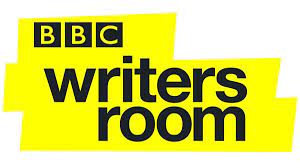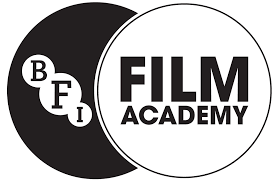CREATIVITY FOR SCRIPTWRITERS 1 day course London Saturday June 21st.
A course for scriptwriters in all media – TV, film, radio, theatre – designed to help you generate exciting ideas and characters, and give your creativity a boost with a day of fun, stimulating writing exercises. Run by TV drama script editor, producer and script consultant PHILIP SHELLEY with guest speaker writer ANDERS LUSTGARTEN
http://www.script-consultant.co.uk/training/
Hi There,
OUTLINES
For no particular reason I seem to have been working a lot this week on the screenwriters’ nightmare that is OUTLINES.
It’s hard to be definitive about OUTLINES because there are so many different types of outline, so many different reasons for writing them.
In my experience there are 2 main reasons for writing them – as a selling document, in order to gain a commission whether it’s for a brand new development project or an episode of an existing series; and as a writer’s aid, an important stage on the road to writing the draft of a script.
Often when things get difficult is when you’re not quite sure why you’re writing an outline, what its exact purpose is.
In general writers don’t seem to enjoy writing these documents – either from a creative or financial point of view! They’re seen as a necessary evil on the way to the relative creative pleasure of writing a script.
But in my experience these documents are hugely important. At their best, they can be a really good, satisfying read (even the very functional, non-florid documents that clinically and economically list the action of a scene without colour) and for you as a professional writer they will play a vital part in your working life, whether you’re trying to sell an idea, or working on creating and structuring a story.
SCRIPT OUTLINES
As above, most writers seem to hate writing these documents. But the reality of the TV and film business is that producers and script editors want as much evidence as they can get of how wonderful your story is going to be before they’re going to commit to paying you a full script fee. So on most productions – and in development – you will often be asked to produce a fairly detailed – often scene-by-scene – outline of your story before going to script.
One thing to say about these documents is that writing them is a very different skill to writing a script. But they can be really useful in helping you as a writer create, build and plan your story. If the story you’re telling is strong, then this will come across in your outline. Although these documents are notoriously hard to write, at their best, they can be a very good read.
What these ‘structure’ outlines should aim to do is to as accurately as possible tell the story of your film AS IT WILL BE SEEN ON SCREEN. ie these documents, in my view, shouldn’t be seen as an opportunity for you as a writer to splurge out huge wodges of unfilmable back-story and exposition. They should, as economically as possible, describe the action of the scene we will watch. eg ‘John staggers along the night street puffing on his cigarette’ NOT – ‘John has never got over the death of his wife 17 years ago but at this moment is beginning to rethink his life by planning revenge on all his enemies. As we will later find out he is going to murder them all, horribly, one by….’ You get the picture! – this is novel writing, it’s not screen-writing.
There is a place for this sort of contextual, conceptual, background writing for screenwriters – but it’s not in these structure outline documents.
ONE PAGE PITCH SELLING DOCUMENTS
One thing I would say initially is that there doesn’t seem to be much mileage for you as a writer trying to sell one page ideas to producers if they don’t already know your work as a writer from a screenplay. No producer worth their salt is going to hire you as a writer unless they have read and loved at least one (usually more) script by you.
Written pitches seem to be becoming shorter and shorter as time and producer-attention-spans get more and more squeezed. So keeping your written pitch down to one side of A4 is a skill that’s worth working on. As budding \ professional screenwriters you should all be constantly looking around you for new ideas (and if you’re not my CREATIVITY FOR SCRIPTWRITERS course – see above! – is designed for YOU!) and then you should be working these ideas into both written and verbal pitches, for whatever medium, genre and time-slot you think they’re right for.
One thing these written pitches shouldn’t do is recount your story in great detail. There is nothing harder to read, in my opinion, than a lengthy synopsis. For me, the word SYNOPSIS implies a story with all of the fun taken out. What a pitch should do is distil the essence of an idea – what it needs to convey is WHAT EXCITES YOU AS AN INDIVIDUAL WRITER ABOUT THE IDEA. It needs to connect you as an individual writer – and your distinctive, individual take – with a brilliant idea.
A written pitch should ideally contain –
The story’s Unique Selling Point.
A strong narrative hook (these first two may be one and the same!).
The broad shape of the story – in the least possible detail that will do it justice – it’s so important this is economically written and doesn’t balloon into indigestible ‘synopsis’. Ideally this should include at least one telling visual detail. (Often what the reader will remember from the best-written of these documents is a single memorable visual image that encapsulates the theme \ story \ lead character).
At least one, hopefully two, memorable and distinctive characters (anymore than three and your reader’s brain is going to start hurting).
The memorable, distinctive world of your story.
An idea of genre and tone
And if it’s pitch for a comedy, then there needs to be something funny in your one page!
What your one pager mustn’t be is full of empty promises. ie don’t waste valuable words on meaningless guff like ‘This going to be side-splittingly funny… this will be hugely exciting and dramatic etc’ A one page pitch needs to deliver not tease – SO, for instance, if your story has a great ‘Sixth Sense’-style twist, include it in your pitch.
———————————
This week has seen the sad deaths of two of this country’s greatest comic writers.
SUE TOWNSEND
Sue Townsend was better-known as a novelist than a playwright or screenwriter – but in any medium, she was a genius. A hugely original, distinctive voice. Like all the best comic writers, her writing was under-pinned with a deep humanity, a really strong, personal and political agenda. The most obvious but most important thing to say about her was that her comic writing was brilliantly funny. Adrian Mole was one of the great comic characters. And while her writing was almost always about really important issues (feminism, social inequality etc), at the same time it was hugely entertaining, funny and accessible. Adrian Mole was a real cultural barometer of the 80’s and beyond. At the same time she could write the most powerfully bleak stories – GHOST CHILDREN is a harrowing, moving novel. Her last novel THE WOMAN WHO WENT TO BED FOR A YEAR was up there with the best of her writing. She also had a big reputation for helping and supporting her fellow writers.
BOB LARBEY
With his writing partner JOHN ESMONDE, Larbey was one of the pillars of UK TV comedy writing through the 70’s and 80s with a string of shows so successful that they almost define an era of British TV situation comedy – shows like THE GOOD LIFE, EVER DECREASING CIRCLES, and PLEASE SIR. Without Esmonde, Larbey wrote further successful series – A FINE ROMANCE and AS TIME GOES BY, both of which starred Judi Dench (AFR with her husband Michael Williams and ATGB with Geoffrey Palmer).
Larbey and Esmonde met at school in South London and started working together on sketches, which they sold to programmes like I’M SORRY, I’LL READ THAT AGAIN and THE DICK EMERY SHOW.
In an interview with the ‘British Comedy Guide’ http://www.comedy.co.uk/features/bob_larbey_interview/ Larbey talks about his successes, how he started working with Larbey, and how UK sitcoms have (temporarily at least) been superseded by American shows like FRASIER and MODERN FAMILY.
Talking about where the inspiration for THE GOOD LIFE came from, Larbey said,
‘I was approaching my 40th birthday, and so was Richard (Briers), and John and I got talking about 40th birthdays. For no good reason it’s one of those milestone ages for men. You get to 40 and suddenly it becomes ‘oh God, what have I done with my life?’ Or ‘oh God, what am I going to do with the rest of it?!’
“That was the premise. A man who’s turned 40 who’s not happy with things, so what does he do about it? We just tacked on self-sufficiency as a way out.”
http://www.theguardian.com/tv-and-radio/2014/apr/06/bob-larbey
http://www.telegraph.co.uk/news/obituaries/10745110/Bob-Larbey-obituary.html
Until next week,
Happy Writing!
All the best
Phil
PHILIP SHELLEY
Twitter: @philipshelley1
April 11th 2014






















